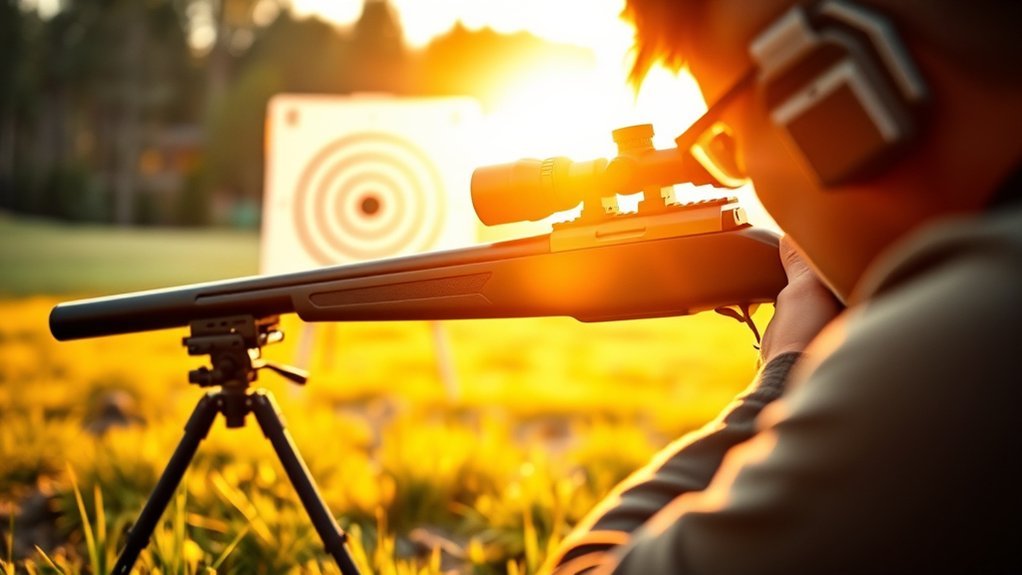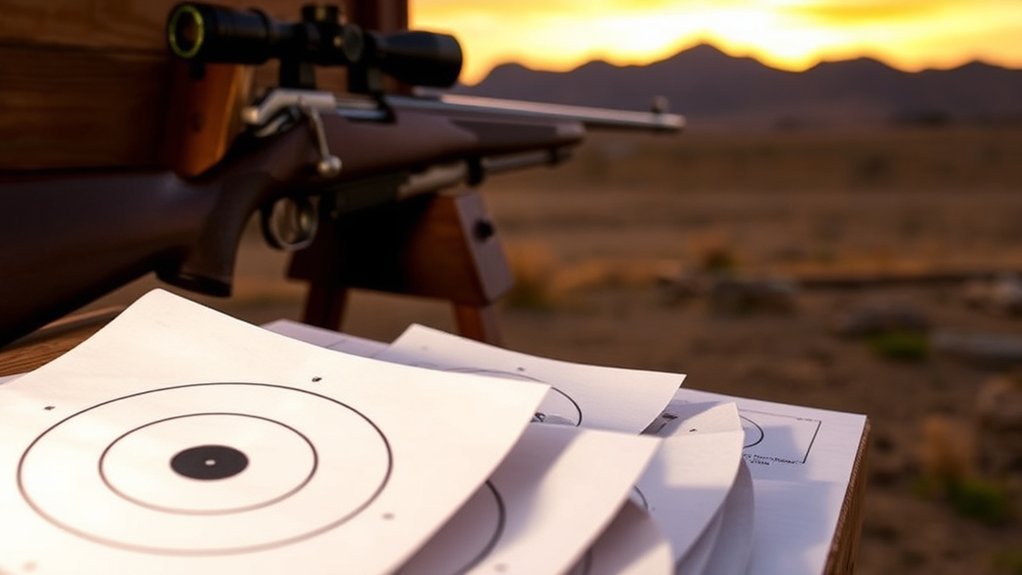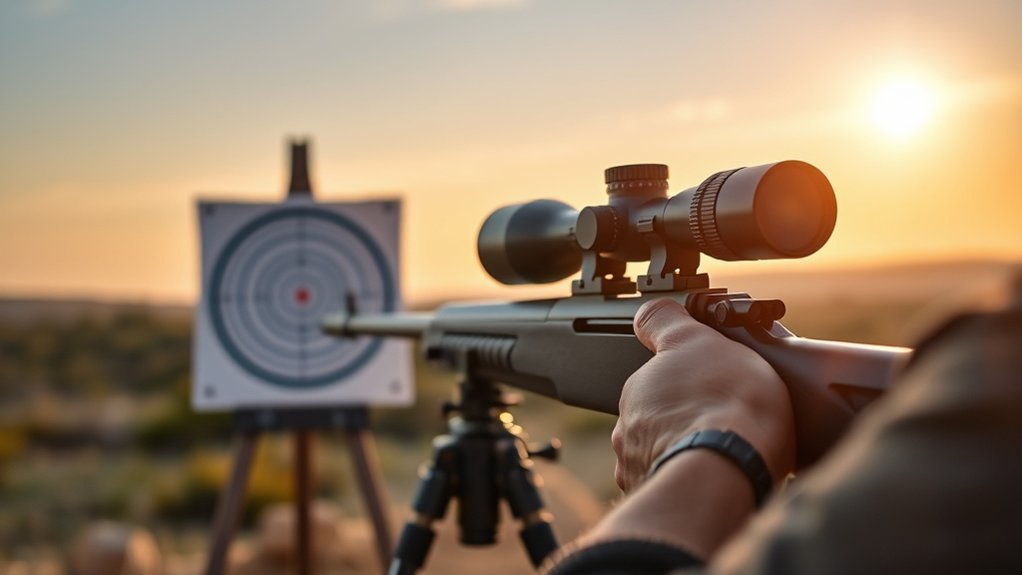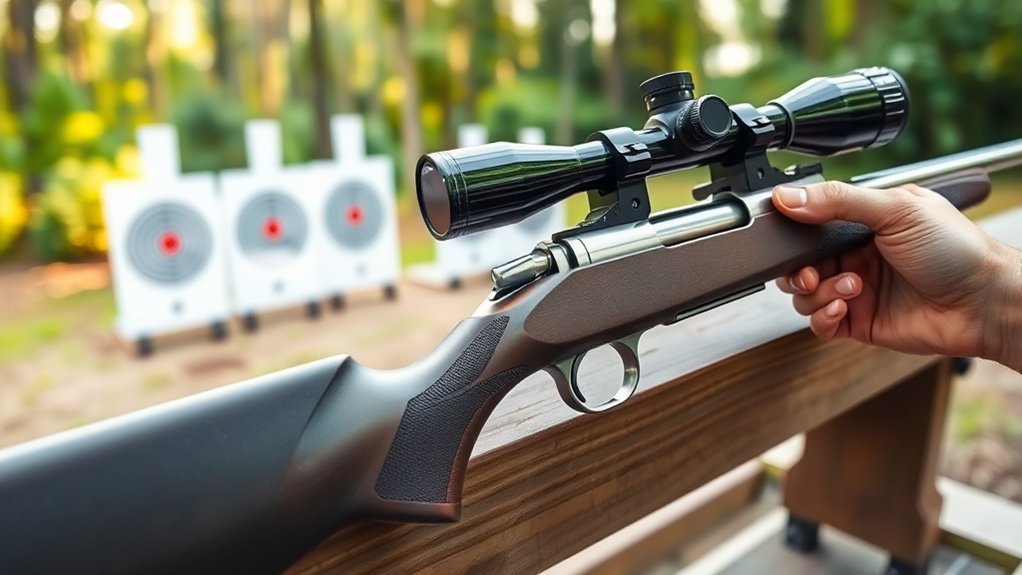When you zero a rifle, you’re ensuring that the point of aim matches the point of impact at a specific distance. This adjustment is vital for achieving accuracy and consistency in your shooting. Factors like ammunition type and environmental conditions can affect your zero. Understanding the various methods and potential pitfalls can greatly enhance your results. Let’s explore the essential steps and tips to make sure your rifle is perfectly zeroed.
Understanding the Basics of Zeroing a Rifle

Zeroing a rifle is essential for ensuring accuracy and precision in shooting. To begin, you’ll want to establish your target distance, typically 100 yards. Set up your rifle securely on a stable rest to minimize movement. Next, fire a group of three shots at the center of your target. Afterward, observe where your shots landed in relation to the bullseye.
Adjust your sights or scope based on this grouping; if shots are low, raise the rear sight or lower the front. Conversely, if shots are right, adjust accordingly to the left. Repeat this process until your shots consistently hit the target’s center. Finally, record your zero settings for future reference to maintain accuracy in subsequent shooting sessions.
The Importance of Zeroing for Accuracy

Achieving a proper zero on your rifle greatly enhances your shooting accuracy. When your rifle is zeroed, the point of aim matches the point of impact at a specific distance, ensuring that every shot lands where you intend. This precision reduces guesswork, allowing you to focus on your technique rather than adjustments during a shoot. Without a proper zero, you may experience significant deviation in bullet trajectory, especially over longer distances. It’s essential to regularly check your zero, as factors like environmental changes, ammunition variations, and equipment wear can affect your rifle’s performance. By committing to this practice, you’ll develop confidence in your shots, ultimately improving your overall marksmanship and making each shot count in the field or at the range.
Different Methods of Zeroing a Rifle

When you’re ready to zero your rifle, it’s essential to choose the right method that suits your shooting style and the specific conditions you’ll be facing. One popular approach is the “bore sighting” method, where you align the rifle’s bore with your target before adjusting the scope. Alternatively, the “25-yard zero” method allows you to start at a closer distance, making initial adjustments easier before moving to your intended range. The “100-yard zero” method is widely used for long-range shooting, allowing you to set your sights for longer distances. Finally, consider the “two-shot” method, where you fire two rounds, measure the group, and adjust accordingly. Choose a method that complements your equipment and shooting environment for best results.
Tips for Achieving a Perfect Zero
To guarantee your rifle is perfectly zeroed, start by confirming that your ammunition and rifle are compatible, as variations in ammunition can affect accuracy. Next, set your target at the desired distance, typically 100 yards for initial zeroing. Use a stable shooting position, employing sandbags or a bipod for support. Fire a three-shot group and observe where the shots land relative to your point of aim. Adjust your sights accordingly: if your shots are low, raise the rear sight or lower the front sight. Remember to allow time between shots for barrel cooling. Finally, confirm your zero with a second three-shot group to verify consistency and accuracy before heading out for your next shooting session.
Common Mistakes to Avoid When Zeroing
Even with a solid understanding of how to zero your rifle, it’s easy to make mistakes that can throw off your accuracy. First, don’t skip the bore sighting step; this initial alignment can save you time and ammo. Second, verify your rifle is stable—using a bench rest or sandbags helps minimize movement. Third, avoid rushing through your shots; take your time to focus on each one, allowing for proper breathing and trigger control. Additionally, double-check your ammo; inconsistencies can lead to erratic performance. Finally, remember to account for environmental factors like wind and elevation; these can greatly affect your zero. By being mindful of these common pitfalls, you’ll greatly enhance your zeroing process and accuracy.
Conclusion
Now that you understand the ins and outs of zeroing a rifle, you’re just one step away from achieving pinpoint accuracy. Picture yourself in the field, your heart racing as you line up that perfect shot. But will your adjustments hold true? As you take a deep breath and pull the trigger, the moment of truth arrives. Will your bullet hit the mark, or will you need to refine your technique? The choice is yours—take aim and find out.

